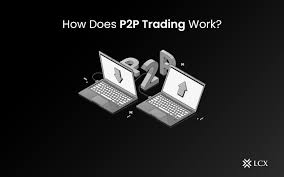In our digital world, we always search for quick simple ways to handle our money with investments like cryptocurrency. Many people trade cryptocurrencies on Peer-to-Peer (P2P) platforms.
These platforms let buyers and sellers trade without a middleman such as a bank or exchange. P2P trading has its perks, but it’s also become a breeding ground for scams. These scams have cost many unsuspecting users large amounts of money. This article will delve into P2P scams, explain how they operate, and share a real-life story of how I lost ₹2 lakhs in one of these scams.
What is P2P Trading & How Does It Work?

Before we explore the scams, let’s get a handle on P2P trading. A P2P platform gives people the chance to buy and sell cryptocurrencies with each other. These platforms serve as a marketplace where users can post offers to buy or sell, set their own prices, and then link up to finish their deals.
The main draw of P2P trading is how flexible it is—traders can pick who they want to deal with how they want to pay, and what rates they’re happy with steering clear of the limits you’d find on centralized exchanges.
Yet, this freedom has its risks. The platform’s limited oversight of transactions increases the chances of scams compared to more secure centralized exchanges. The absence of strict security measures leaves users open to attack, and scammers take advantage of this weakness.
Common Types of P2P Scams
Here’s a list of scams you might face when you use P2P platforms:

- Fake Payment Proofs: Buyers often scam sellers by sending fake proof of payment. They might send edited screenshots that show the transaction as “completed” when no money has changed hands.
- Account Takeover Fraud: Scammers target your account . They might try to break into your P2P account by guessing weak passwords, or use tricks to get your login details.
- Reversal Fraud: This scam works like this: The buyer sends money and gets the cryptocurrency. Then, they call their bank to cancel the payment. As a result, the seller loses both the money and the crypto. Banks take the customer’s side in these arguments, which leaves the seller out of pocket.
- Fake Escrow: Some person-to-person platforms offer a service to hold the cryptocurrency or cash until both sides say the deal is good. But tricksters sometimes create fake platforms or try to talk users into trusting them with their funds.
- Payment with Stolen Funds: The scammer might pay you using stolen money or credit card details. When the real owner of the stolen cash reports the theft, the transaction gets reversed. This leaves you without any money and your crypto gone.
My Personal Experience: Losing ₹2 Lakhs In p2p
Let me tell you my own story, so you can see how much damage these scams can cause. I didn’t have much experience with P2P trading when I spotted some good-looking deals on a well-known platform. A buyer got in touch with me offering a great rate to purchase my cryptocurrency.
At the start, everything looked okay. We chatted back and forth, and the buyer showed me proof of payment indicating they had put ₹2 lakhs into my account.
The deal seemed legit—a bank slip showed my name and account info so I sent the crypto to the buyer. But my bank account never got the ₹2 lakhs. I tried to reach the buyer right away, but they vanished from the site, and all my attempts to contact them failed.
I asked the site’s help team for support, but they couldn’t do much since I’d already sent the crypto. The buyer had used a fake payment proof to trick me. The worst part? I trusted too much thinking the receipt meant the money had come through.
How to Guard Against P2P Scams
Dropping ₹2 lakhs hit me hard, but it opened my eyes to some key lessons about keeping your money safe on P2P platforms. Here’s what I learned that might help you steer clear of scams:
- Use Escrow Services: Trade on platforms that provide secure escrow services. This ensures the release of cryptocurrency happens after both parties confirm the payment’s completion.
- Check Payments : Don’t trust screenshots or receipts to confirm payment. Look at your bank account or wallet to make sure the funds have arrived before you release any cryptocurrency.
- Pick Reputable Platforms: Stick to known and trusted platforms with a good name and strong security measures. Read reviews and ask trusted people in the crypto community for their recommendations.
- Watch for Warning Signs: Don’t fall for deals that look too amazing or people who push you to send crypto fast. Crooks often create a sense of rush and promise big rewards to make you act without thinking.
- Set Up Two-Step Verification (2SV): Boost your P2P account safety by turning on 2SV. This adds another level of security by asking for a second check before anyone can get into your account.
- Stay Doubtful: If something doesn’t feel right, it isn’t. Go with your gut and never let anyone hurry you into making a choice. Take your time to check every part of the deal.1
Conclusion
P2P trading gives you room to move and chances to make money, but it also leaves you open to all kinds of scams. I lost ₹2 lakhs in a P2P scam, and while it hurt, it’s made me way more careful about how I trade online. If you follow the advice I shared earlier, you can keep yourself safe from falling into the same trap. Just remember to check payments, use escrow services, and trust your gut to avoid becoming a P2P scam victim.